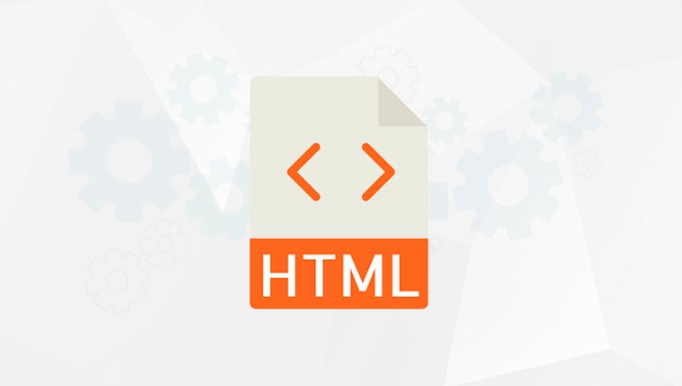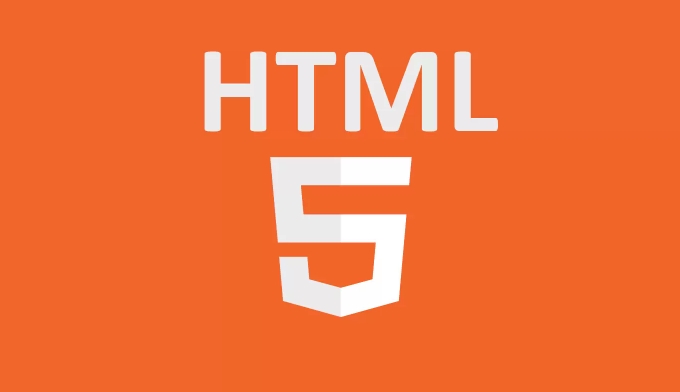The reversed property is used to display ordered lists (
- ) in reverse order, and its working principle is to automatically descend to the number of list items. 1. The browser first counts the number of <li> elements; 2. Then count down the number from this number; 3. Supports manual setting of the starting value and using it in combination with the start attribute; 4. Only affects the visual display but does not affect HTML structure and accessibility; 5. Commonly used in countdown, legal documents, comment sections and other scenarios; 6. Modern browsers generally support it, but IE11 and below versions are incompatible, so JavaScript is required.

The reversed attribute on an ordered list ( <ol></ol> ) is a boolean HTML attribute that, when present, causes the list to display in reverse order. Normally, an ordered list starts at 1 and increments by 1 for each item (1, 2, 3, etc.). When you use reversed , the browser automatically counts down from the total number of list items.

For example:
<ol reversed> <li>First item</li> <li>Second item</li> <li>Third item</li> </ol>
This would display as: 3. First item
2. Second item

- <li> Third item
It's not just about showing numbers backwards — the actual numbering logic is reversed, so the last item gets the lowest number.
How does the reverse attribute work?
When you applied reversed to an <ol></ol> , the browser handles the counting based on how many items are in the list. Here's what happens behind the scenes:

-
<li> The browser counts the number of
<li> elements inside the <ol></ol> .
<li> It then assigns descending numbers starting from that count.
<li> If you manually set a value on a list item, it will continue counting down from there.
You can also combine reversed with the start attribute if you want to control both the direction and the starting point.
Some things to keep in mind:
-
<li> It doesn't affect the semantic structure or accessibility — screen readers still announce the correct position.
<li> It only affects visual appearance, not the actual order of the content in the HTML.
When should you use reversed ordered lists?
Reversed lists aren't used very often, but they can be useful in specific situations:
-
<li> Countdowns : Great for showing steps in reverse, like countdowns or final race positions.
<li> Legal or academic documents : Sometimes sections need to be numbered in reverse order.
<li> Comment threads : Occasionally used to show newer comments first but still maintain numbered context.
In most everyday web content, you probably won't need it — but when you do, it's a clean way to handle reverse numbering without JavaScript.
Browser support and compatibility
The reversed attribute is supported in most modern browsers including Chrome, Firefox, Edge, and Safari. However, older versions of Internet Explorer (IE11 and below) don't support it.
If you're working on a project that needs to support legacy browsers, you might want to:
-
<li> Use JavaScript to manually assign numbers.
<li> Or avoid relying on automatic numbering altogether.
For most current web development projects, though, using reversed is safe and straightforward.
Basically that's it.
The above is the detailed content of What is the reversed attribute on an ordered list?. For more information, please follow other related articles on the PHP Chinese website!

Hot AI Tools

Undress AI Tool
Undress images for free

Undresser.AI Undress
AI-powered app for creating realistic nude photos

AI Clothes Remover
Online AI tool for removing clothes from photos.

Clothoff.io
AI clothes remover

Video Face Swap
Swap faces in any video effortlessly with our completely free AI face swap tool!

Hot Article

Hot Tools

Notepad++7.3.1
Easy-to-use and free code editor

SublimeText3 Chinese version
Chinese version, very easy to use

Zend Studio 13.0.1
Powerful PHP integrated development environment

Dreamweaver CS6
Visual web development tools

SublimeText3 Mac version
God-level code editing software (SublimeText3)

Hot Topics
 How do I stay up-to-date with the latest HTML standards and best practices?
Jun 20, 2025 am 08:33 AM
How do I stay up-to-date with the latest HTML standards and best practices?
Jun 20, 2025 am 08:33 AM
The key to keep up with HTML standards and best practices is to do it intentionally rather than follow it blindly. First, follow the summary or update logs of official sources such as WHATWG and W3C, understand new tags (such as) and attributes, and use them as references to solve difficult problems; second, subscribe to trusted web development newsletters and blogs, spend 10-15 minutes a week to browse updates, focus on actual use cases rather than just collecting articles; second, use developer tools and linters such as HTMLHint to optimize the code structure through instant feedback; finally, interact with the developer community, share experiences and learn other people's practical skills, so as to continuously improve HTML skills.
 How do I use the element to represent the main content of a document?
Jun 19, 2025 pm 11:09 PM
How do I use the element to represent the main content of a document?
Jun 19, 2025 pm 11:09 PM
The reason for using tags is to improve the semantic structure and accessibility of web pages, make it easier for screen readers and search engines to understand page content, and allow users to quickly jump to core content. Here are the key points: 1. Each page should contain only one element; 2. It should not include content that is repeated across pages (such as sidebars or footers); 3. It can be used in conjunction with ARIA properties to enhance accessibility. Usually located after and before, it is used to wrap unique page content, such as articles, forms or product details, and should be avoided in, or in; to improve accessibility, aria-labeledby or aria-label can be used to clearly identify parts.
 How do I create a basic HTML document?
Jun 19, 2025 pm 11:01 PM
How do I create a basic HTML document?
Jun 19, 2025 pm 11:01 PM
To create a basic HTML document, you first need to understand its basic structure and write code in a standard format. 1. Use the declaration document type at the beginning; 2. Use the tag to wrap the entire content; 3. Include and two main parts in it, which are used to store metadata such as titles, style sheet links, etc., and include user-visible content such as titles, paragraphs, pictures and links; 4. Save the file in .html format and open the viewing effect in the browser; 5. Then you can gradually add more elements to enrich the page content. Follow these steps to quickly build a basic web page.
 How do I minimize the size of HTML files?
Jun 24, 2025 am 12:53 AM
How do I minimize the size of HTML files?
Jun 24, 2025 am 12:53 AM
To reduce the size of HTML files, you need to clean up redundant code, compress content, and optimize structure. 1. Delete unused tags, comments and extra blanks to reduce volume; 2. Move inline CSS and JavaScript to external files and merge multiple scripts or style blocks; 3. Simplify label syntax without affecting parsing, such as omitting optional closed tags or using short attributes; 4. After cleaning, enable server-side compression technologies such as Gzip or Brotli to further reduce the transmission volume. These steps can significantly improve page loading performance without sacrificing functionality.
 How do I create checkboxes in HTML using the element?
Jun 19, 2025 pm 11:41 PM
How do I create checkboxes in HTML using the element?
Jun 19, 2025 pm 11:41 PM
To create an HTML checkbox, use the type attribute to set the element of the checkbox. 1. The basic structure includes id, name and label tags to ensure that clicking text can switch options; 2. Multiple related check boxes should use the same name but different values, and wrap them with fieldset to improve accessibility; 3. Hide native controls when customizing styles and use CSS to design alternative elements while maintaining the complete functions; 4. Ensure availability, pair labels, support keyboard navigation, and avoid relying on only visual prompts. The above steps can help developers correctly implement checkbox components that have both functional and aesthetics.
 How has HTML evolved over time, and what are the key milestones in its history?
Jun 24, 2025 am 12:54 AM
How has HTML evolved over time, and what are the key milestones in its history?
Jun 24, 2025 am 12:54 AM
HTMLhasevolvedsignificantlysinceitscreationtomeetthegrowingdemandsofwebdevelopersandusers.Initiallyasimplemarkuplanguageforsharingdocuments,ithasundergonemajorupdates,includingHTML2.0,whichintroducedforms;HTML3.x,whichaddedvisualenhancementsandlayout
 How do I use the element to represent the footer of a document or section?
Jun 25, 2025 am 12:57 AM
How do I use the element to represent the footer of a document or section?
Jun 25, 2025 am 12:57 AM
It is a semantic tag used in HTML5 to define the bottom of the page or content block, usually including copyright information, contact information or navigation links; it can be placed at the bottom of the page or nested in, etc. tags as the end of the block; when using it, you should pay attention to avoid repeated abuse and irrelevant content.
 How do I use the tabindex attribute to control the tab order of elements?
Jun 24, 2025 am 12:56 AM
How do I use the tabindex attribute to control the tab order of elements?
Jun 24, 2025 am 12:56 AM
ThetabindexattributecontrolshowelementsreceivefocusviatheTabkey,withthreemainvalues:tabindex="0"addsanelementtothenaturaltaborder,tabindex="-1"allowsprogrammaticfocusonly,andtabindex="n"(positivenumber)setsacustomtabbing






